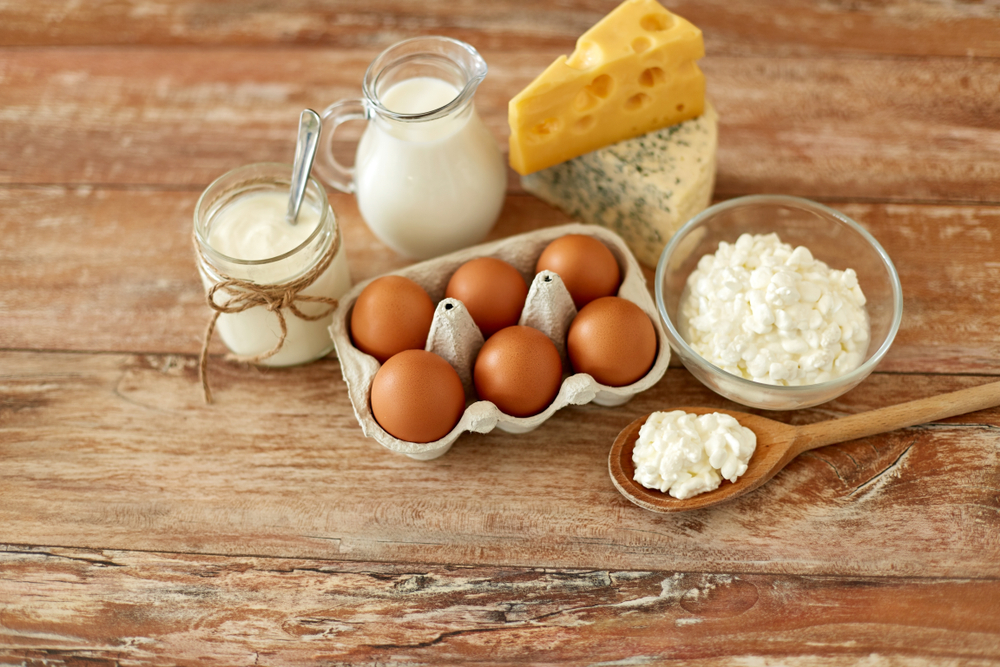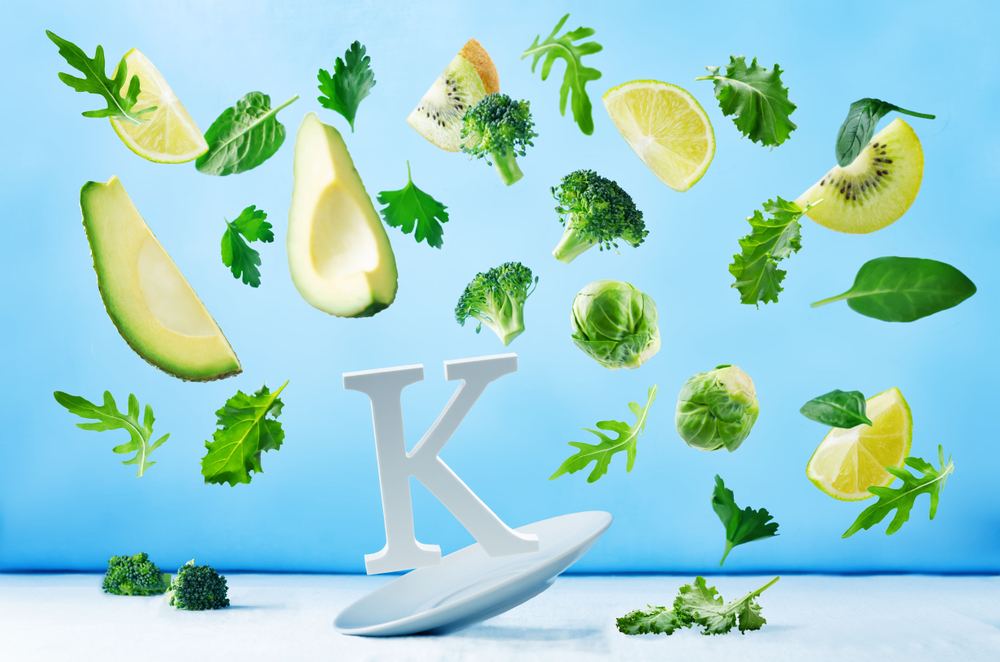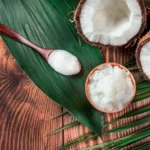Everyone should be concerned about bone health. One out of every two women will break a bone due to osteoporosis over their lifetime. It’s clear that calcium and vitamin D play a role in maintaining healthy bones. Vitamin K, however, is a big part of maintaining bone health as well. It’s a fat-soluble vitamin essential for blood clotting and healthy teeth and bones.
But in recent years, scientists have discovered there are two distinct forms of vitamin K: K1 (the one most of us associate with the vitamin) and K2. While both types are important for human health, K2 has emerged as a key player in many areas of health–in particular, bone density and heart health. So let’s explore what makes this form so special and how you can be sure you’re getting enough of it.
Where does vitamin K2 come from?
To understand the importance of vitamin K2, you first need to understand the role of K1 (phylloquinone), a fat-soluble vitamin that helps blood clot. You find K1 naturally in leafy green vegetables such as spinach and kale. However, with modern diets, most people don’t get enough K1 (and lack fiber too).
Bacteria in your gut can convert the K1 you consume from these plant-based foods into vitamin K2 but it’s unclear how efficient this process is. So, getting K2 (menaquinone) directly is the best option for preserving bone health. Vitamin K2 is a fat-soluble vitamin in animal-based foods that contain fat and protein. These include butterfat from dairy products, egg yolks, and chicken skin.
In addition to these animal sources of K2, some fermented foods like natto provide the nutrient–but only if they’re made with specific mold cultures that contain high levels of this compound. You can also buy K2 supplements. One form called MK-4 is made from animal-based sources of the vitamin, like grass-fed beef, while MK-7 comes from natto and is non-animal-based and suitable for vegetarians and vegans.
How does K2 work?
The role of this important nutrient in bone health is to turn on a protein called osteocalcin, a protein that directs calcium to your bones. Osteocalcin is like a traffic cop that directs calcium to where the body can best use it, such as to build bone.


Without sufficient amounts of K2, your body will not be able to effectively activate osteocalcin. This can lead to brittle bones that are more susceptible to fractures from falls or other accidents.
K2 also works with calcium and phosphorus levels in the body. When these two minerals are balanced properly, they work together to create healthy bones that won’t break as easily. Plus, there’s evidence that it could lower the risk of cardiovascular disease by directing calcium toward bones and away from the inner walls of your arteries, where it could build up and lead to atherosclerosis.
What are some common sources?


There are several common sources that you may already be eating. These include:
• Liver – This food is high in K1, which helps prevent blood clots but not as much in K2. It’s also high in vitamin A and iron, so it’s not the best choice for everyone.
• Egg yolks – Eggs are an excellent source of both types of K and also contain vitamins A, D, and E. They’re also high in cholesterol, so keep your intake controlled if you don’t want to increase your risk for heart disease or stroke.
• Cheese – Cheese contains only trace amounts of both types of K but is still a good source because it has some calcium and protein that can help balance out other foods on your plate (and even help fill up).
There is a source of K2 that you’re probably not eating, natto, a fermented soy-based food popular in Japan. Although you can buy natto at Asian food markets, some people don’t like the smell, but if you can get past that, it will boost your body’s K2 status. Of course a quality supplement that contains vitamin K2 is another great source.


Is there a daily recommended dose?
There is no specific dietary reference intake (DRI) for K2. However, the Food and Nutrition Board of the Institute of Medicine has established a DRI for vitamin K:
Men aged 19 to 70 years need 120 mcg per day; women aged 19 to 50 years need 90 mcg per day, and women who are 51 years old or older need 65 mcg per day.
These recommendations were made in 1997 when only one form was known in humans–phylloquinone (K1). While we now know that more than one form exists in the body (menaquinones), the research on their potential roles and benefits is still far from complete.
Getting sufficient vitamin K2
If you’re concerned about bone health, it may help to add more of this beneficial nutrient to your diet. If you don’t eat enough K2-rich foods, there are supplements available.


A supplement can provide many health benefits, especially when paired with vitamin D (another vitamin that a large number of people aren’t getting enough of). As with other vitamins, quality is important when selecting a supplement. Trusted review sites are a great place to start, such as Natural Review’s Top Five Vitamin D3+K2 Supplements of 2022.






